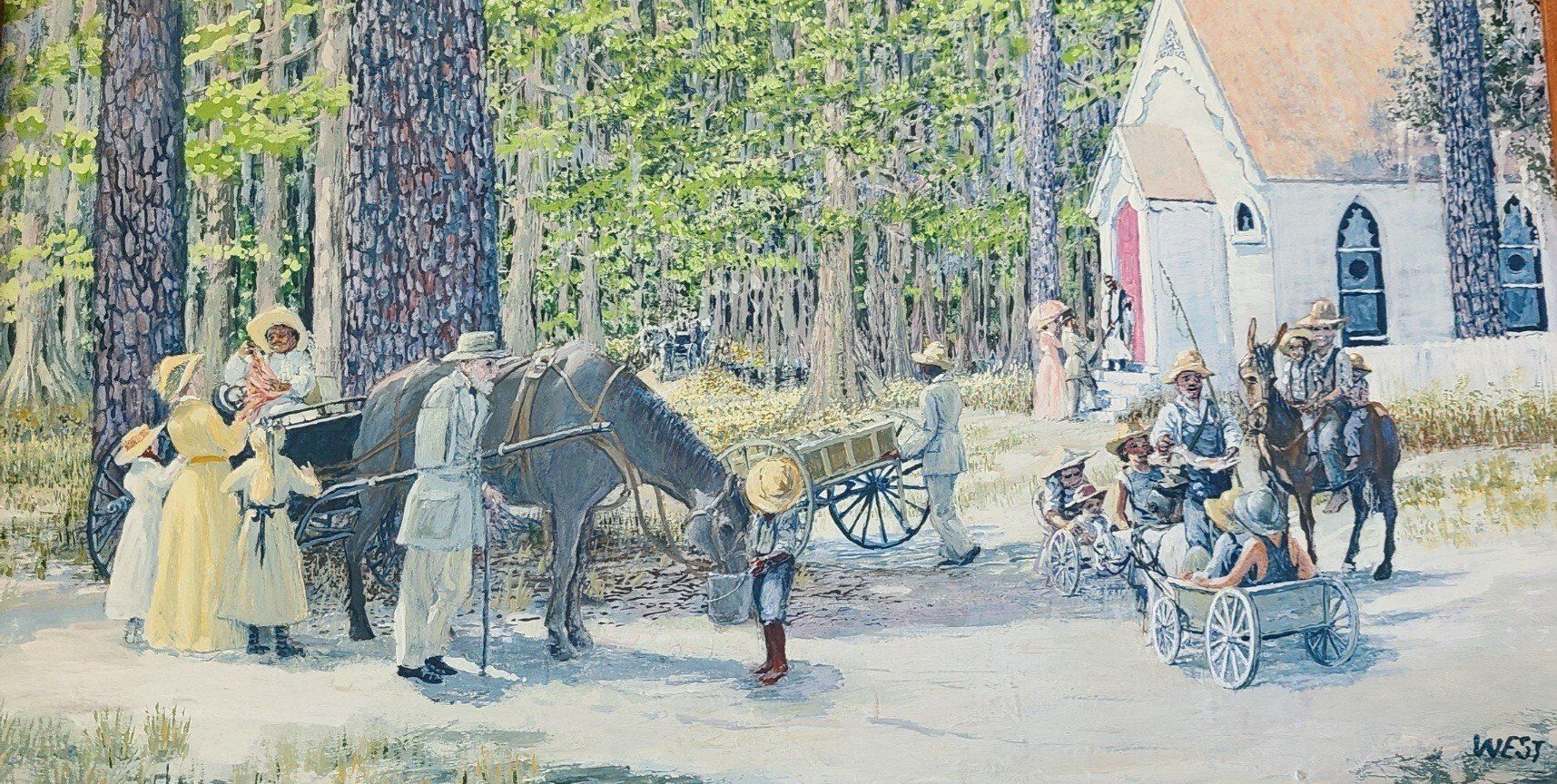
#11Catherine Kitty Smith Springs - Church of the Epiphany
212 Central Avenue
Catherine Smith “Kitty” Springs (1828-1895)
Outside the Church of the Epiphany stands a monument to Kitty Springs, who was a successful woman of color despite oppressive culture and laws in the 1870s. Her success enabled her to donate land for mission churches, schools, and an infirmary for the disadvantaged, particularly people of color. After her husband’s death, Mrs. Springs opened a store on Main Street which sold various goods, including hats. Kitty Springs is buried with her husband in the Old White Church Cemetery.
Catherine Smith (“Kitty”) Springs (1828-1895)
• Catherine Smith was probably born at Charleston; her mother was ½ Cherokee.
• Catherine Smith lived with Richard Springs, a Charleston dry-goods merchant before the war. The two moved to Summerville in 1858 where Richard retired and Kitty opened “Catherine Springs Hat and Millinery Shop” at (modern) N. Cedar St. and W. Second North St.
• For about ten years immediately after the Civil War, during the Federal military occupation, mixed-racial marriages were legal. During this period, Kitty married Richard Springs.
• Richard died in 1871 as Kitty’s reputation grew. She was considered to be “a woman of means”
• She opened a store on Main Street and in 1893, advertising “dry goods, trimmings, millinery, ladies, children’s and infant’s shoes; worsted and woolen goods and a general assortment of small wares.”
• Kitty became wealthy and obtained title to considerable real estate locally. She owned the property on Hutchinson Square which became the old post office. She made deliveries in her carriage with boxes of hats and shoes.
• She donated the following parcels of land:
1. US 78 and N. Main St (the site of the old Dorchester County Hospital) in 1883, to be used for a school for poor whites/American Indians, a chapel and an infirmary. (The clinic, established in 1897, was known as the “Samuel Prioleau Infirmary” and it served “all classes.” The chapel exists today as the St. Barnabas Indian Mission Chapel at the Cummins Seminary on S. Main St.)
2. The property for “none but a genteel dwelling or cottage and school house with no trees to be unnecessarily “cut or destroyed” became the site of the Alston (colored) Graded School.
3. The Epiphany Church land, originally the site of the Bank School (colored, 1894). The school was sponsored by the Epiphany Church, a mission of St. Paul’s; Kitty and members of the Epiphany congregation administered the work of the school. Frank was credited with building the church.
• Catherine Springs is buried beside her husband at the Old White Church Cemetery. Today, a monument to her stands in the Epiphany churchyard.



